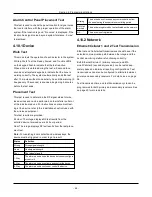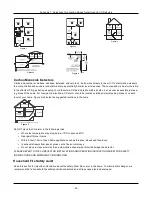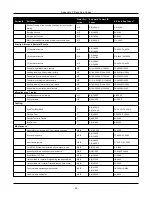
Appendix 1: Guidelines for Locating Smoke Detectors and CO Detectors
Figure 1
Figure 2
Figure 3
Figure 3a
Figure 4
Carbon Monoxide Detectors
Carbon monoxide is colorless, odorless, tasteless, and very toxic. It also moves freely in the air. CO detectors can measure
the concentration and sound a loud alarm before a potentially harmful level is reached. The human body is most vulnerable
to the effects of CO gas during sleeping hours; therefore, CO detectors should be located in or as near as possible to sleep-
ing areas of the home. For maximum protection, a CO alarm should be located outside primary sleeping areas or on each
level of your home. Figure 5 indicates the suggested locations in the home.
GROUND
FLOOR
BASEMENT
KITCHEN
GARAGE
BEDROOM
BEDROOM
BEDROOM
CARBON MONOXIDE DETECTOR
Figure 5
Do NOT place the CO alarm in the following areas:
l
Where the temperature may drop below -10ºC or exceed 40ºC
l
Near paint thinner fumes
l
Within 5 feet (1.5m) of open flame appliances such as furnaces, stoves and fireplaces
l
In exhaust streams from gas engines, vents, flues or chimneys
l
Do not place in close proximity to an automobile exhaust pipe; this will damage the detector
PLEASE REFER TO THE CO DETECTOR INSTALLATION AND OPERATING INSTRUCTION SHEET FOR SAFETY
INSTRUCTIONS AND EMERGENCY INFORMATION.
Household Fire Safety Audit
Read this section for important information about fire safety. Most fires occur in the home. To minimize this danger, we
recommend that a household fire safety audit be conducted and a fire escape plan be developed.
- 49 -
















































